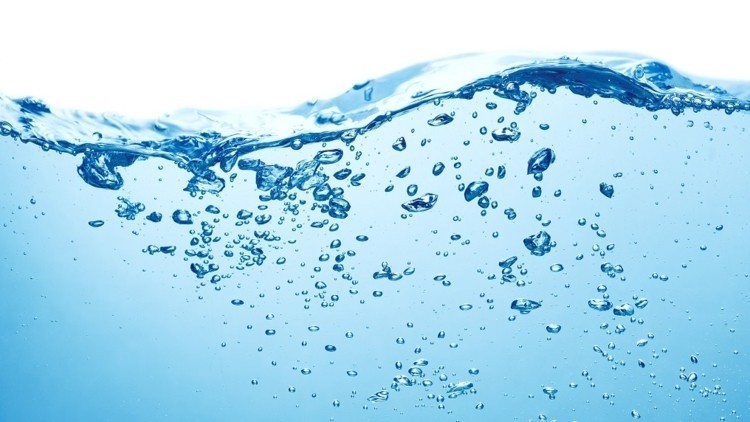USP and Unesp produce technology that eliminates dye and carcinogenic metal from water
New Delhi: Researchers at the São Carlos Institute of Chemistry (IQSC) at USP and at the Institute of Chemistry (IQ) at Universidade Estadual Paulista (Unesp) created a new material capable of simultaneously filtering and degrading carcinogenic metal and dye that can be found in water . With the possibility of being reused several times without losing its effectiveness, the technology presents itself as a membrane, composed of bacterial cellulose coated with a layer of molybdenum disulfide (MoS2), a non-toxic metal. The results of the work generated an article published in the American scientific magazine ACS Applied Materials & Interfaces .
Ubirajara Pereira, professor and one of the authors of the research – Photo: IQSC / USP
One of the authors of the research, Professor Ubirajara Pereira Rodrigues Filho, from IQSC, explains that, to degrade pollutants, the membrane needs a light source, responsible for supplying energy to the molybdenum disulfide so that, through some chemical reactions , it degrades toxic compounds as they are “stuck” to the material. Scientists from the IQSC Group of Hybrid and Inorganic Materials, coordinated by the professor, tested the technology’s performance by building a photoreactor, a device through which the flowing water could pass through the membrane, which was illuminated by a lamp. After two hours of treatment, the specialists managed to remove 96% of methylene blue (dye) and 88% of chromium (VI) – a carcinogenic metal. The membrane was able to degrade the substances both in isolation and mixed.
Unprecedented, the use of bacterial cellulose in the development of technologies for water decontamination has several advantages over other materials, such as silica and titanium dioxide, which are applied in the form of powder or membranes: “In addition to being a material – Renewable raw material, bacterial cellulose allows the construction of a lighter, flexible, resistant material, with greater durability and less susceptible to cracks ”, explains Pereira, who praised the relevance of the study:“ Although our research is still just a proof of concept and is in an initial stage, it is very gratifying to have the possibility of providing those who develop water treatment plants with new technologies to improve the quality of life of the population ”, he adds.
The membrane is composed of bacterial cellulose coated with a layer of molybdenum disulfide (MoS2), a non-toxic metal – Photo: Henrique Fontes
The membrane structure developed by the researchers is a type of airgel, which is a gel whose liquid part has been replaced by a gas, in the case of the material made by USP and Unesp, air. To build the technology, it was necessary to perform a series of procedures. Initially, from a group of bacteria, the specialists obtained a bacterial cellulose hydrogel, a highly porous material and composed of approximately 99% water. After this step, the product is washed to eliminate possible impurities and, later, coated with molybdenum disulfide nano sheets. Finally, the material is transformed into airgel through a process called controlled drying, which replaces water with air, forming the final product.
Global challenge
+ More
Metal-contaminated water depollution project to compete in the US
Compounds such as paints, metals, medicines, cosmetics and personal hygiene products are among the so-called emerging contaminants, substances that can be found in small concentrations in the rivers that supply municipalities and reach our homes, since water treatment plants lack adequate equipment to remove them. “There is a great need to develop new materials with improved properties and with greater applicability for the efficient removal of a wide range of pollutants from water”, explains Elias Paiva Ferreira Neto, lead author of the research and postdoctoral fellow at IQ-Unesp.
The expert says that for years emerging contaminants have challenged hundreds of Brazilian and foreign scientists to seek efficient solutions and to understand the impacts they can generate on the environment and on living beings. According to the 2017 United Nations (UN) World Water Development Report , more than 80% of the world’s urban and industrial wastewater – and more than 95% in some less developed countries – are released into the environment without treatment . The constant growth of the world population, the opening of new industries, the increase in agriculture, livestock and mining activities are factors that contribute to the worsening of the scenario, threatening the quality of drinking water supply.
+ More
Drop by drop: gardener creates project to capture rainwater
Elias, who graduated from IQSC, where he also completed his master’s and doctorate, under the guidance of Professor Ubirajara, is currently doing a post-doctorate at the Photographic Materials Laboratory at IQ-Unesp with funding from the São Paulo Research Foundation ( Fapesp). He explains that the study carried out in partnership with USP represents a significant advance in the development of technologies for the simultaneous removal of organic (associates and living organisms) and inorganic contaminants from water in order to promote its purification, and can be an important tool for seasons treatment of effluents from the textile and leather industries of the State of São Paulo. In the next steps of the study, he says he intends to test the new membrane for the degradation of other substances, such as samples of drugs and pesticides.
The work is the result of a partnership with researcher Sidney José de Lima Ribeiro, professor at IQ-Unesp and supervisor of Elias, and with Fábio Simões, professor at the Department of Physics at Unesp, in Rio Claro. The study also had the participation of Sajjad Ullah, from the University of Peshawar, Pakistan; IQSC doctoral student Amanda Perissinoto; and Master’s student Thais Caroline de Almeida and Master Rafael Romano, both from IQ-Unesp.

